言語を選択
通貨を選択
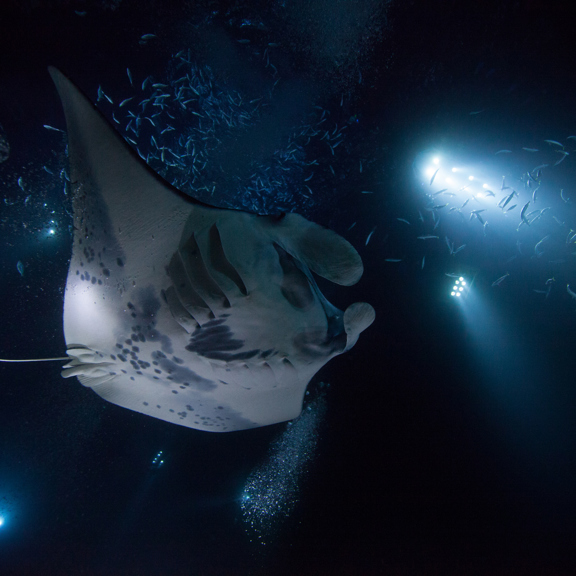
マンタレイの魔法:「マンタ・マン」の愛称で親しまれるKeller Laros氏との対話
ハワイ島は、雲霧林の聖域から燃え盛る火山まで、冒険の目的地であるモクテキチです。しかし、島の西部コナコーストで最もクールなことの1つは、シュノーケリングや雄大なマンタとのスキューバダイビングです。
この優しい生き物に情熱を注いでいるのは、ケラー・ラロスです。私たちは、コナのマンタ、市民科学者の台頭、そしてマンタと過ごす人が増えていることにどれほど興奮しているかについて、著名な擁護者であり自然保護活動家である彼と話をしました。
「マンタマン」
 ケラー・ラロスは、コナでのスキューバダイビングの初期の頃からマンタに魅了されてきました。 1985年にケラーはダイビングインストラクターのプロフェッショナル協会になり、それ以来、14、000スキューバダイビングにログインしています。1993年、ケラーと地元のスキューバツアーオペレーターのグループは、ダイバーとマンタの両方を保護するための安全ガイドラインを作成しました。主なルール:観察のみ - マンタに触れないでください!
ケラー・ラロスは、コナでのスキューバダイビングの初期の頃からマンタに魅了されてきました。 1985年にケラーはダイビングインストラクターのプロフェッショナル協会になり、それ以来、14、000スキューバダイビングにログインしています。1993年、ケラーと地元のスキューバツアーオペレーターのグループは、ダイバーとマンタの両方を保護するための安全ガイドラインを作成しました。主なルール:観察のみ - マンタに触れないでください!
2002年、ケラーは、この美しい種と彼らが生息する海域を救い、擁護するという彼の使命を推進するために、マンタパシフィック研究財団を設立しました。マンタパシフィックは、マンタと海洋環境に関する研究、教育、保護を追求することを使命とする501(c)3非営利団体です
「私のメッセージは、今ここだけでなく、私たち、私たちの子供、孫のために、私たちの海を大切にすることです」とケラー氏は言います。
優しい巨人
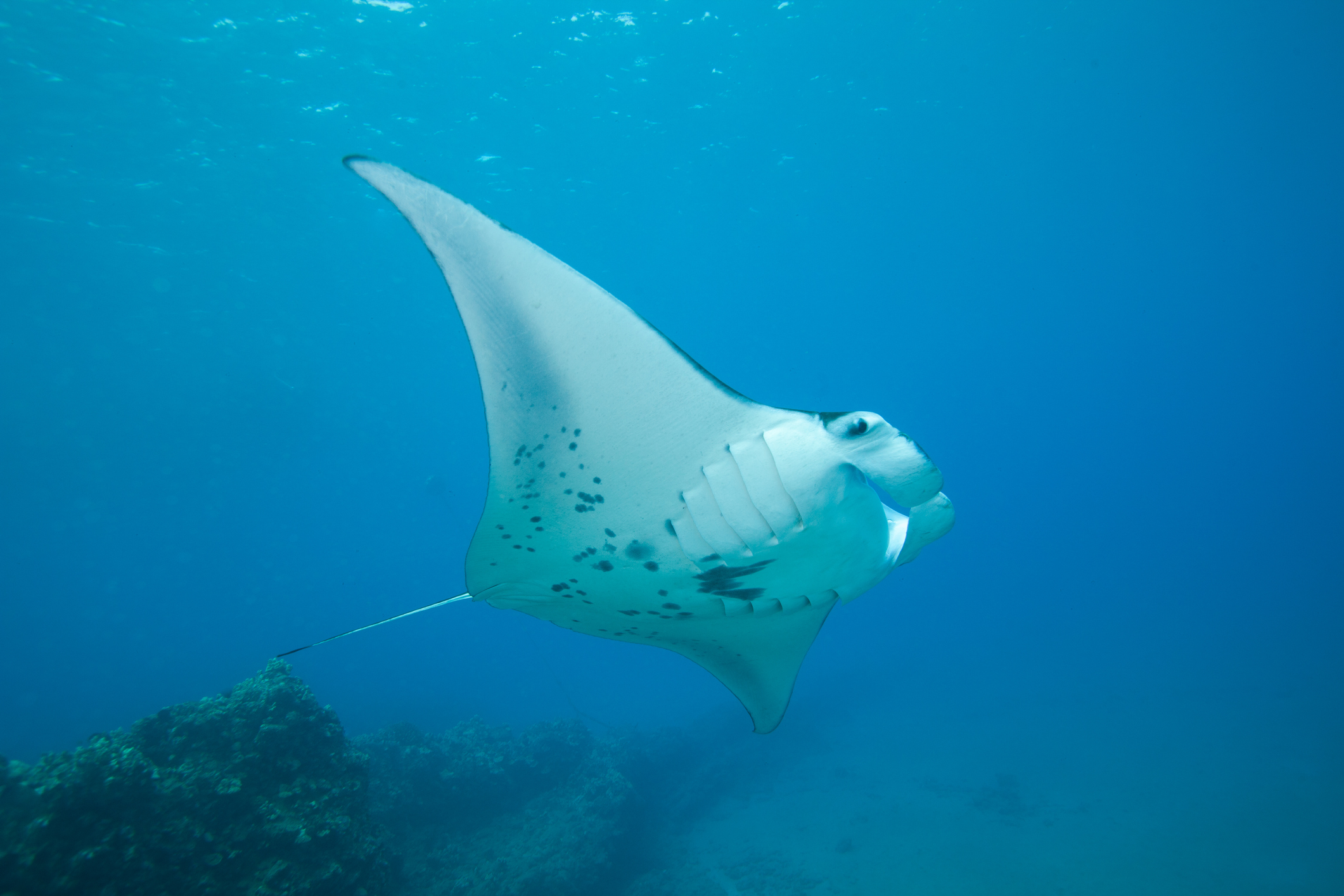
ビッグアイランド周辺のマンタは、主にMobula alfrediとして知られるサンゴ礁のマンタ種です。翼幅は最大 12 フィートに達し、世界最大の魚の一部です。
マンタはそれぞれ、その下側に明確な斑点模様があり、これは識別に使用できる指紋に似ています。マンタパシフィックは、これらのパターンを使用して、ハワイ州コナで識別された 330 匹以上のマンタのデータベースを作成しました。
マンタと一緒に泳ぐ夜
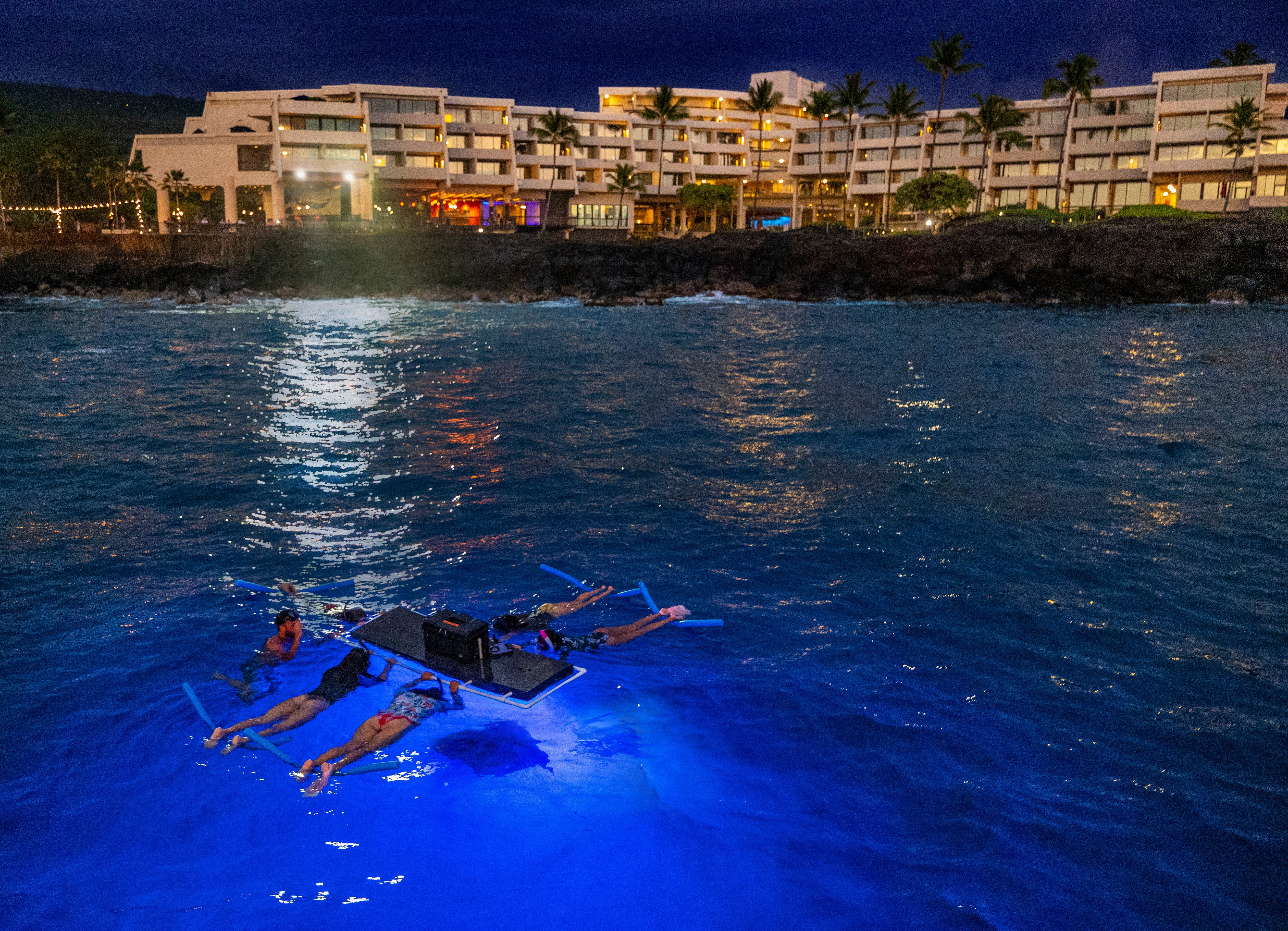
コナコーストは、これらのマンタを間近で見るのに最適な場所の1つです。ケアウホウ湾の アウトリガー・コナ・リゾート&スパの目の前で、まさにそれを行うことができます。
マンタが水面に出てプランクトンを濾過摂食する様子を見ることができます。シュノーケラーの浮き輪が周囲のプランクトンを照らすと、近くのマンタが光に引き寄せられて餌をやる時間に集まり、 あなたは彼らと一緒に浮かぶことができます。
また、夕暮れ時には毎日マンタの観察やアウトリガーのマンタラーニングセンターでのトークを試すことができ、そこで彼らの習性や生息地、コナ海岸に引き寄せられるもの、海流がマンタのパターンにどのように影響するかを発見することができます。そして、9月16日にチェックアウトワールドマンタデー、マンタと海洋環境に関する地元、国内、国際的な専門家によるプレゼンテーションと2023。
家族全員で
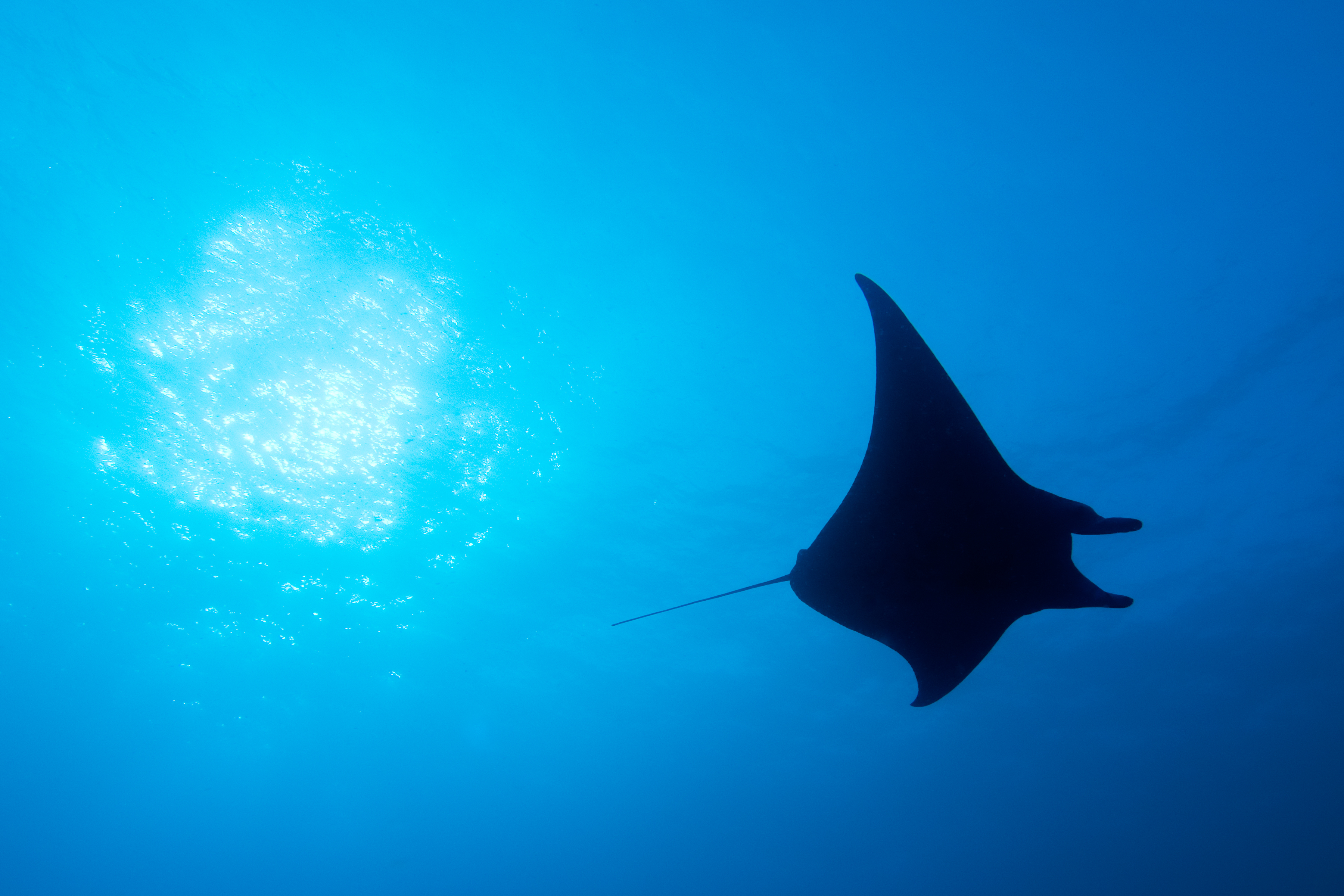
ケアウホウ湾には、現在数百匹のマンタがいます。最近の遺伝子研究によると、これらの強い水泳選手は簡単に異なるハワイの島に移動することができますが、彼らは家の近くにとどまり、島の間の深い水路を渡って移動することはめったにありません:これは、 500 年に1人の女性が島のグループ間を移動するのに相当します- 1年、500 年、そして約1人の男性 50-150 年に。
これにより、湾内にマンタの「家族」が生まれました。
「現在、DNAを走査するために組織生検を受けています...データポイントを取得して、人口がどの程度異なるか、または異なるかを把握し、家系図を構築するには、誰が誰と関係がありますか?叔母さん、叔父さん、いとこたち?」とケラーさんは言います。「世界の一部の地域では、彼らはもっと旅行しますが、ハワイ島のマンタはここにたむろしています!」
市民科学者と持続可能性
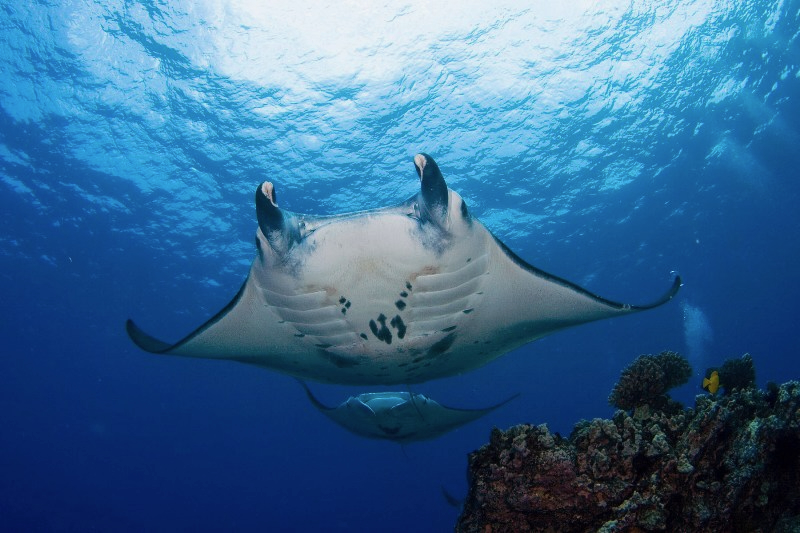 ビッグバーサ、写真提供:Bo Pardue
ビッグバーサ、写真提供:Bo Pardue
よく知られているマンタの1つは、ビッグバーサとして知られています。ケラーは、「 1991 年に初めてバーサに会ったとき、彼女はすでに大人でした。最近彼女に会いましたが、彼女は同じサイズです。彼女はおそらく 30 歳か 40 歳でしょう」
市民は、コナコーストのマンタ追跡アプリに貢献して、目撃情報や写真を共有し、これらの生き物の動きを追跡するのを助けることができます-現在、 300 以上のユニークなエイがカタログ化されています。
さらにクールなことに、新しいマンタを最初に発見した人の一人であれば(前述のマンタの下腹部のユニークな斑点模様を通じて)、その名前を命名する栄誉を得られるかもしれません。ケラーが共有しているように、最新の市民の命名の1つは、ご想像のとおり、パンデミック中に目撃されたクアランティーナにちなんで名付けられました。
明るい光線の未来
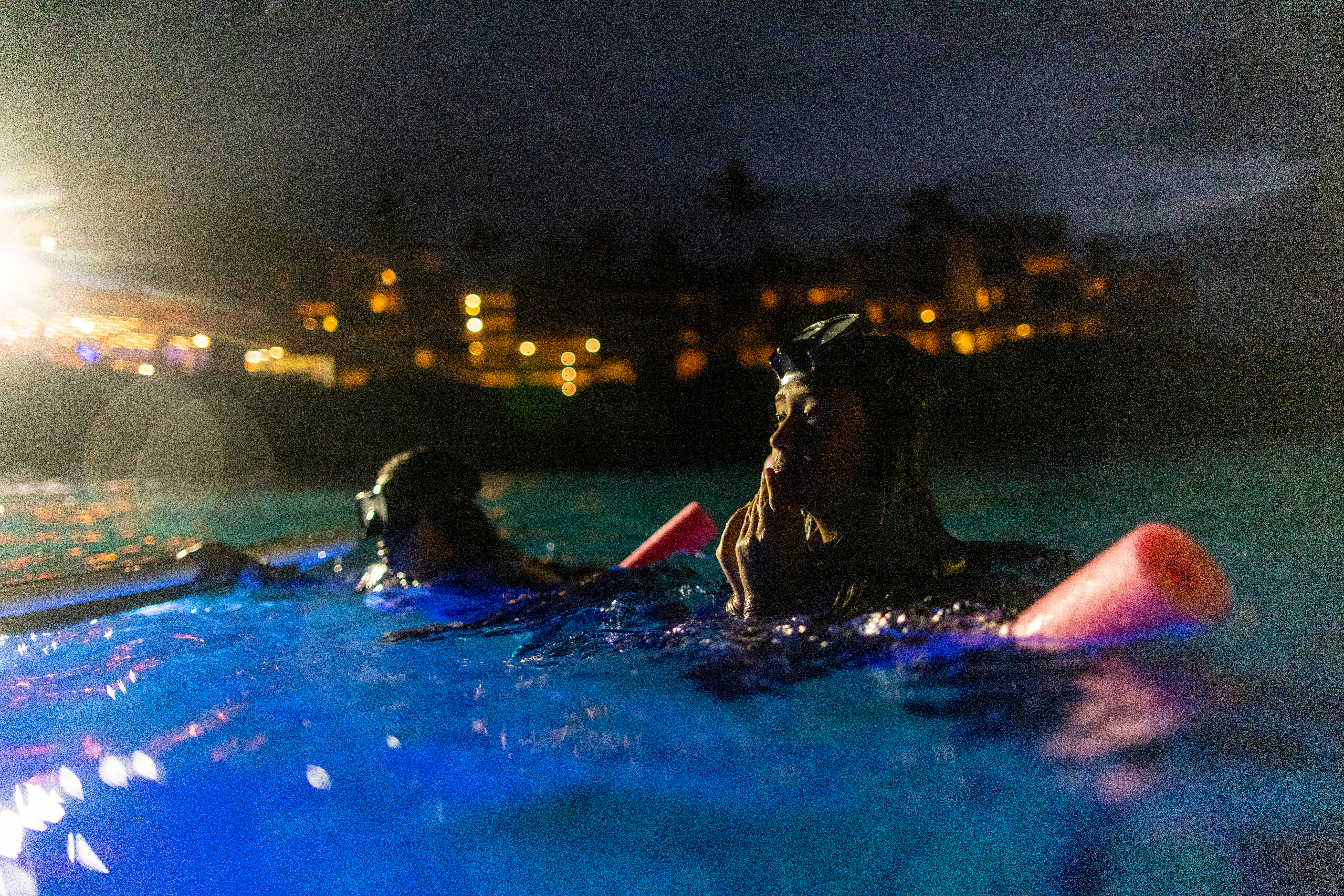
ケラー氏によると、水の中にいる人が増え、GoProが増え、市民科学者が増えれば、認知度も高まるという。マンタは、釣り糸の絡まりから生息地の劣化まで、自然の生息地でさまざまな課題に直面しているため、追加のサポートは不可欠です。
マンタパシフィック研究財団はまた、地元のコミュニティ、ダイビングオペレーター、研究者、立法者と協力して、移民を研究し、保護活動を推進しています。そして、ケラー氏のような人々や同時代の人々、そして今日の市民科学者たちの自然保護への情熱とコミットメントのおかげで、ハワイのケアウホウ湾のマンタは繁栄し続けています。
「人々は火山とマンタを求めてビッグアイランドにやって来ます」とケラーは言います。「これは大きな魅力です。だからこそ、彼らの世話をし、ハワイで最高の体験を提供することがとても重要なのです。」
コナに参加して滞在し、これらの穏やかな海の巨人の威厳と魔法を自分で体験するためのその他の方法をチェックしてください。
